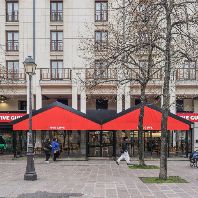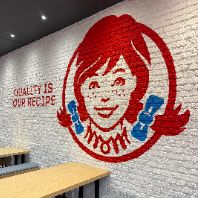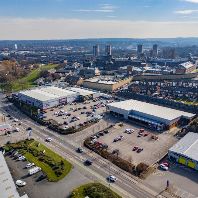Such is the current situation in the greater Ostrava area that one million people are being served by two dominant shopping centers Futurum Ostrava and Avion Shopping Park. The Moravia-Silesia region with its significant purchasing power is thus one of the last regions in the Czech Republic where there is still room to expand traditional shopping centers with a greater representation of fashion. The Karolina, Ostravica, Central and Breda & Weinstein in Opava projects which under preparation for construction can make use of this unsaturated demand. "However, I'm afraid we'll no longer find other localities with such potential in the Czech Republic," said Martin Kubík from the international consulting firm DTZ, which performs detailed analyses of the development of the Czech retail market.
"But this doesn't mean a halt in development of new properties or in reconstruction of existing ones. Everything is driven by customer demand, which changes over time, and in two years it may be totally different from now." Per 1000 inhabitants Ostrava has the lowest stock of shopping centers and retail parks compared with other cities which are above 100,000 inhabitants.
The new supply of shopping centers and retail parks will be very limited this year, only ca. 120,000 m² are expected to be completed, which is the lowest annual completion since 2000. "There are only two major projects - Galerie Harfa in Prague 9 totalling 42,000 m² and the second phase of Forum Liberec amounting to 22,000 m², to be completed. Besides these two projects other completions will include only smaller retail parks in cities under 50,000 inhabitants," added Lenka Hartmanová, analyst DTZ.
Current studies by DTZ show that site selection for new shopping centers has been changing in recent months: Developers are locating their projects more in city centers or their wider surroundings. New shopping malls are often combined with office space and in some cases with residential units. The projects' size is thus directly dependent on location as well as on potential demand.
In less attractive locations developers today cannot rely on occupying commercial space with the traditional mix they should focus more on services that previously would appear only sporadically in shopping centers. Space is thus created for fitness and wellness zones, doctors' and dentists' offices, schools, banking and insurance services.
Another trend is a focus on fresh food in the context of the relatively high consumption expenditures of food (49%), an example is the planned food mall in Karlín. There is gradually becoming an increasing popularity for food directly received from producers (mainly fruit and vegetables) and organic products. However, the site for the location of this type of unit should be well considered.
Competitors of the above mentioned projects are the new concepts of retail chains like Tesco and Kaufland, which set aside part of the space for smaller tenants and thus diversify what is offered to hypermarket customers. It also increases their competitiveness against department stores, though only in a certain range of products and services. Such facilities most frequently offer traditional services such as a cleaners, shoe repair, flower shop, pharmacy or news agent. However, hypermarkets are now also accommodating demand for quality food and are expanding to include specialized food outlets offering meat, sausage, bread or wine, for example. There are a limited number of tenants in this segment and so hypermarkets are direct competitors of shopping centers.
"Proof that the retail market in the Czech Republic is becoming saturated is the behavior of discount chains. Just two years ago they avoided towns with populations less than 30 thousand. Now their plans include towns and communities with populations under 5000. We expect therefore that instead of new shopping centers we will more often see reconstruction of older facilities or remodeling of centers built in the last five or ten years," said Martin Kubík, head of DTZ's asset & property manag














